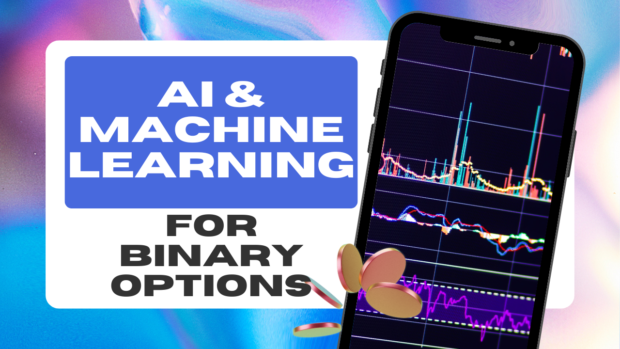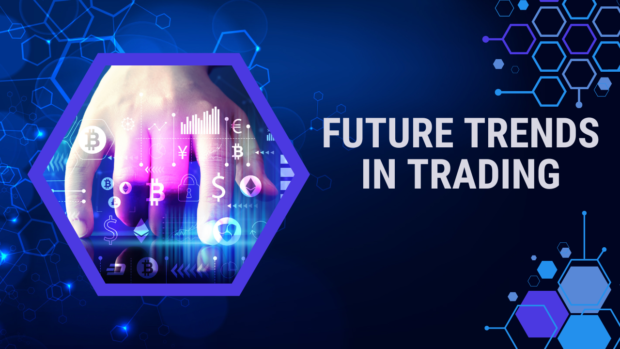In the ever-evolving world of financial trading, binary options have carved out a niche for themselves due to their straightforward proposition: will the value of an asset go up or down within a set period? However, making accurate predictions in binary options trading is anything but simple.
The market’s inherent volatility can turn what seems like a sure win into a loss in a matter of seconds. This is where the power of artificial intelligence (AI) and machine learning comes into play, offering traders tools that were once the domain of science fiction.

The AI Revolution in Trading
AI and machine learning are revolutionizing the way traders approach the market, providing them with predictive tools that analyze vast amounts of data to forecast market trends. These technologies can sift through historical and real-time data at a speed and depth impossible for human traders. By identifying patterns and predicting future movements, AI-driven strategies offer a competitive edge in binary options trading.
Percival Knight, a visionary in the field of computational finance, eloquently summarizes the impact of these technologies: “In the intricate dance of the markets, AI and machine learning are the choreographers, predicting steps before they’re taken.” This quotation encapsulates the predictive power of AI in navigating the complex and fast-paced world of financial trading.
How AI and Machine Learning Work
At their core, AI and machine learning algorithms are designed to learn from data. In the context of binary options trading, this means analyzing price movements, trading volumes, news sentiment, and other relevant factors to predict market directions.
The ability of these algorithms to continuously adapt and refine their models based on new information is a key advantage. As more data becomes available, the predictions can become increasingly accurate in forecasting market trends.
There are several core techniques that underpin AI and machine learning for financial applications like binary trading:
Predictive Analytics
Predictive analytics utilizes a variety of statistical techniques, like regression analysis, as well as machine learning models like random forests and gradient boosting machines. These methods identify patterns and relationships within historical data to determine the likelihood of future outcomes.
For binary options, predictive analytics can forecast asset price trajectories over different time horizons. This provides traders with insights into potential upward or downward trends to inform their trading decisions.
Sentiment Analysis
Sentiment analysis leverages natural language processing (NLP) to gauge the overall sentiment towards a traded asset based on textual data from news, social media, forums, and other sources. Since public sentiment is a key driver of market movements, deriving these insights can unveil emerging trends before they are reflected in pricing data alone.
The typical workflow involves extracting relevant text data, applying NLP algorithms to compute sentiment polarity (positive/negative/neutral), and then combining the sentiment signal with other factors in a machine-learning model.
Pattern Recognition
One of the core strengths of AI is its ability to automatically detect patterns within large, high-dimensional datasets. In finance, this powerful pattern recognition capability can identify recurring correlations, cycles, and formations that often signal emerging price trends.
From classic technical indicators like candlestick patterns to complex relationships between derivatives prices and underlying assets, AI models can parse through voluminous data to surface predictive signals that humans might miss.
Here is a summary of some key pattern recognition approaches and their applications to binary trading:
| Technique | Description | Binary Options Application |
| Neural Networks | Artificial neural networks trained to recognize patterns in data | Identifying formations in price/volume data to predict trends |
| Clustering | Grouping data points into clusters exhibiting similar traits | Finding correlated assets, uncovering related market regimes |
| Dimensionality Reduction | Projecting high-dimensional data onto lower dimensions while preserving patterns | Extracting salient predictive features from complex datasets |
While each technique has its own strengths, complex methods that combine multiple approaches tend to be most effective for maximizing predictive performance.

Examples of AI-Powered Tools for Binary Options
As AI/ML techniques gain traction, many off-the-shelf tools are emerging to help binary options traders leverage these capabilities.
- TradeCalls uses NLP and machine learning to analyze text data and market sentiment, generating predictive trading signals. Its pre-built models can be customized, and the platform offers backtesting tools.
- Potato Trade provides a chance to analyze potential scenarios and customize your investment strategy accordingly. It also offers a platform where other traders can share their scenarios and exchange ideas.
- For Bitcoin binary options, AutoBTC combines machine learning models with sentiment analysis to forecast price movements. Its AI signal service alerts traders to potential opportunities, providing real-time notifications with supplementary data. AutoBTC also offers auto-trading execution capabilities.
While these are just a few examples, the integration of advanced AI/ML with binary options trading platforms will likely become increasingly seamless as regulatory clarity emerges and adoption grows.
Implementing AI in Your Trading Strategy
There are numerous strategies that traders use to increase their chances of success. For example, you can explore this comprehensive guide to choosing the best binary options strategies in 2024. Still, predictive analysis is a challenging task.
Successfully integrating AI and machine learning into a binary options trading workflow requires careful planning and execution:
Data Collection & Preprocessing
The first critical step is assembling a comprehensive dataset containing all factors potentially relevant for making accurate predictions. This typically includes historical price data, trading volumes, news/text data, and any other domain-specific data sources.
With the data collected, extensive preprocessing is required to handle missing values, noise, and format inconsistencies. Feature engineering, the process of deriving new predictor variables from raw data, is also crucial for transforming the data into representations that machine learning models can effectively learn from.
In this table, we’ve outlined some common data preprocessing steps:
| Technique | Description |
| Filling Missing Values | Interpolating or imputing missing data points |
| Normalization | Rescaling feature values to a common range |
| Text Preprocessing | Cleaning, tokenizing, and vectorizing text data |
| Feature Creation | Deriving new predictive features from raw data |
Model Selection & Training
The next stage involves carefully selecting the appropriate machine learning model(s) and training them on the preprocessed data. Popular ensemble methods for modeling financial data include random forests, gradient boosting, deep neural networks, and various forms of time series models.
Advanced aspects like hyperparameter tuning, regularization, and cross-validation are crucial for optimizing the model’s ability to generalize to unseen data. Model interpretability is also an important factor for financial applications to understand how predictions are being made.
Evaluation, Backtesting & Deployment
Before going live, it’s critical to rigorously test the model’s performance using techniques like backtesting on held-out data, simulated trading, and other evaluation strategies. Assessing performance across different market regimes is key to ensuring robust results.
With a validated, high-performing model, the final stage is to seamlessly integrate it into a binary options trading platform or strategy. This could involve full automation based on model predictions or providing intelligent assistive signals to human traders.
Monitoring, Maintenance & Continuous Improvement
Market dynamics are constantly evolving, so models must be continuously monitored, retrained on new data, and improved over time. Strategies for continual learning, such as regularly retraining models and incorporating feedback loops, are essential.
Challenges and Considerations
While the potential of AI/ML techniques is immense, challenges and pitfalls must be carefully navigated:
- Data Quality: Models are only as good as the data they are trained on. Poor quality data riddled with errors, extreme noise, or inherent biases will lead to suboptimal predictions, no matter how advanced the algorithms are. Extensive data cleaning and cross-validation are non-negotiable.
- Adversarial Vulnerability: Like humans, machine learning models can be deceived and manipulated by adversarial attacks designed to cause incorrect predictions. As AI/ML systems become more widely deployed, prioritizing robustness and security against adversaries is paramount.
- Ethical Considerations: The use of AI/ML raises concerns about fairness, accountability, and transparency. In financial domains with systemic risk, it’s crucial that models avoid discriminatory biases and that their predictions are interpretable even if automated.
Future Trends and Developments
AI and machine learning for binary options trading are still nascent fields, with exciting future developments on the horizon:
- Alternative Data: As IoT sensors, satellite imagery, and other new data sources become available, their integration into predictive models could uncover novel insights. Techniques for efficiently mining and learning from these alternative data types will grow.
- Quantum Computing: While still in the early stages, quantum computing could eventually dramatically accelerate the training and execution of certain machine learning models. This could lead to ultra-fast, real-time adaptive trading systems.
- Interpretable AI: As models grow more complex, the demand for interpretable AI that explains its predictions will increase. Developing AI/ML systems that are both accurate and provide transparent, trustworthy reasoning will be a key challenge.
In the tumultuous realm of binary options, AI and machine learning are poised to be the traders’ choreographers — seamlessly guiding them through the volatile dance of the markets with their remarkable predictive capabilities. As these techniques continue to advance, the future of trading will likely become ever more tightly intertwined with the vanguard of artificial intelligence.
Members of the editorial and news staff of the Daily Caller were not involved in the creation of this content.




